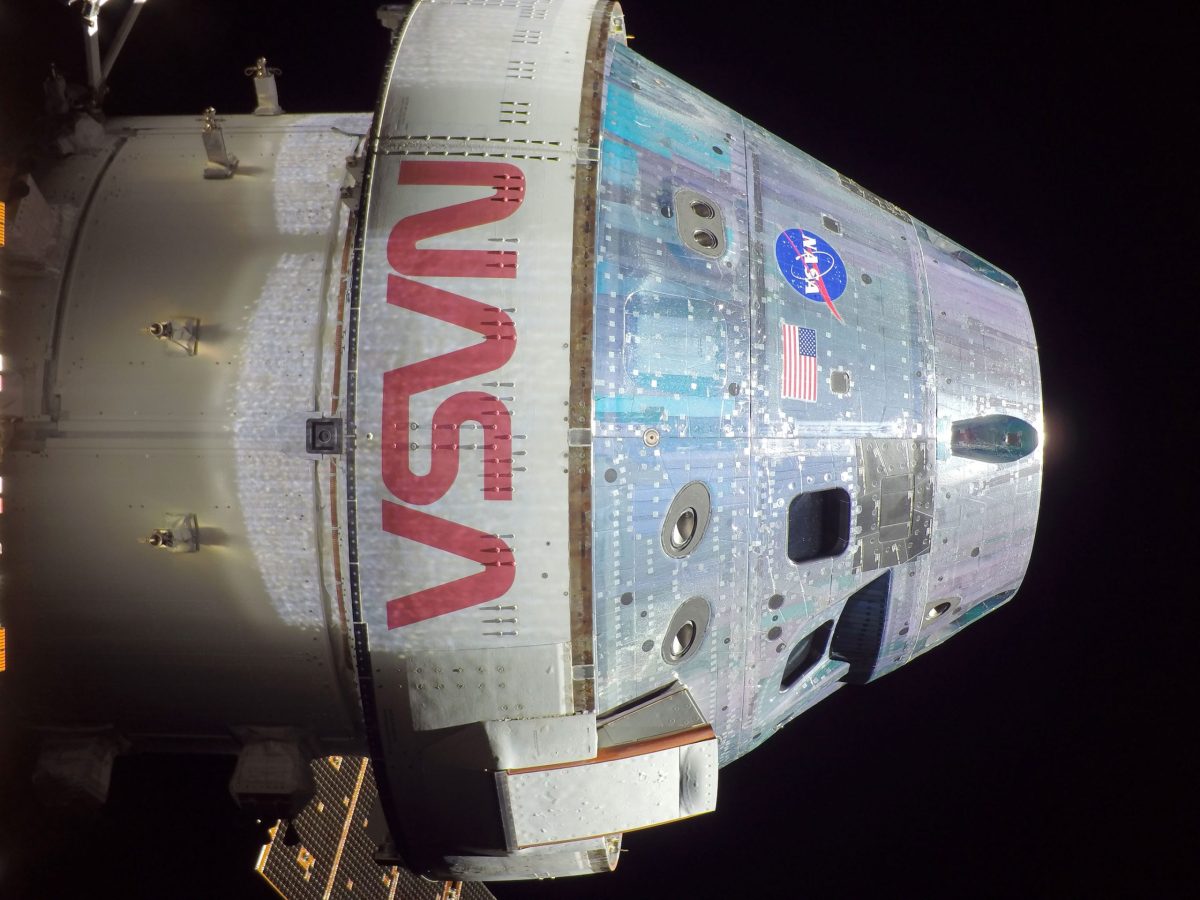Orion snapped this high-resolution selfie in space with a camera mounted on its solar array wing during a routine external inspection of the spacecraft on the third day of the Artemis I mission. Credit: NASA
Testing WiFi Signals, Radiator System, GO for Outbound Powered Flyby
NASA’s Artemis I Mission Management Team polled “go” on Saturday, November 19 for Orion’s outbound powered flyby past the Moon. Starting at 7:15 a.m. EST (4:15 a.m. PST) on Monday, November 21, NASA will cover the flyby live on NASA TV, the agency’s website, and the NASA app. The burn is planned for 7:44 a.m. As the Orion capsule passes behind the Moon from 7:25 a.m. through 7:59 a.m., it will lose communication with Earth. It will make its closest approach of approximately 80 miles (130 km) from the surface at 7:57 a.m.
During flight day four, each solar array was moved to different positions by flight controllers to test the strength of the WiFi signal with the arrays in different configurations. The WiFi transfer rate between the camera on the tip of the solar array panels and the camera controller was tested by the Integrated Communications Officer, or INCO. The goal was to determine the best position for the most efficient transfer of imagery files. Teams discovered that having multiple cameras on at once can impact the WiFi data rate. Therefore, to optimize transfer time in the future, solar array wing file transfer activities will be accomplished from one solar array wing at a time.
The Emergency, Environmental, and Consumables Manager, or EECOM, tested Orion’s radiator system. Two radiator loops on the spacecraft’s European Service Module help expel excess heat generated by different systems throughout the flight. Flight controllers are testing sensors that maintain the coolant flow in the radiator loops, switching between different modes of operation and monitoring performance. During speed mode, the coolant pumps operate at a constant rate. This is the primary mode used during Artemis I. Flow control mode adjusts the pump speed as needed to maintain a constant flow through the system. The flight test objective is to monitor system performance and the accuracy of flow sensors to characterize the stability of this mode of operation. Each loop is monitored in flow control mode for 72 hours to provide sufficient data for use on future missions.
Star trackers are sensitive cameras that take pictures of the star field around Orion. By comparing the pictures to its built-in map of stars, the star tracker can determine which way Orion is oriented. The star trackers on Orion are located on the European Service Module on either side of the optical navigation camera. This November 2019 photo was taken as the Orion crew and service module stack for Artemis I was lifted out of the Final Assembly and Test (FAST) cell. Credit: NASA
As part of planned testing throughout the mission, the guidance, navigation, and control officer, also known as GNC, performed the first of several tests of the star trackers that support Orion’s navigation system. Star trackers are a navigation tool that measure the positions of stars to help the spacecraft determine its orientation. In previous flight days, engineers evaluated initial data to understand star tracker readings correlated to thruster firings.
Engineers hope to characterize the alignment between the star trackers that are part of the guidance, navigation and control system and the Orion inertial measurements units, by exposing different areas of the spacecraft to the Sun and activating the star trackers in different thermal states.
Just after 5:30 p.m. on November 19, Orion had traveled 222,823 miles from Earth and was 79,011 miles from the Moon, cruising at 812 miles per hour. You can track Orion via the Artemis Real-Time Orbit Website, or AROW.
Overnight, engineers in mission control will uplink large data files to Orion to better understand how much time it takes for the spacecraft to receive sizeable files. On flight day five, Orion will undergo its third planned outbound trajectory correction burn to maneuver the spacecraft and stay on course to the Moon.
Share your story or advertise with us: Whatsapp: +2347068606071 Email: info@newspotng.com














